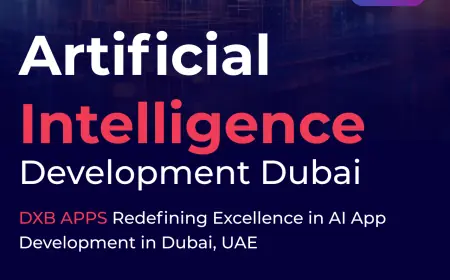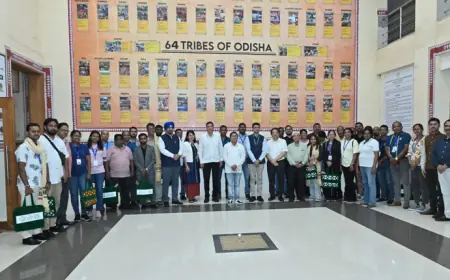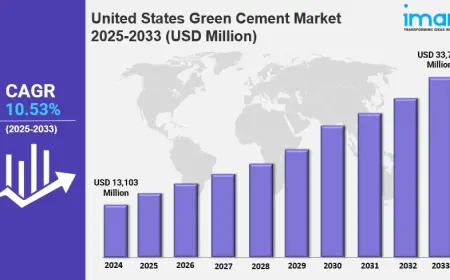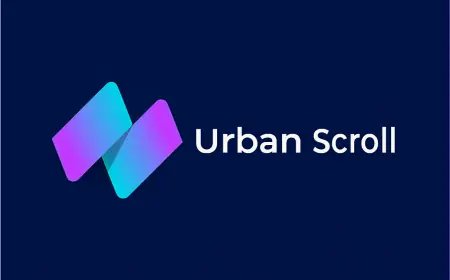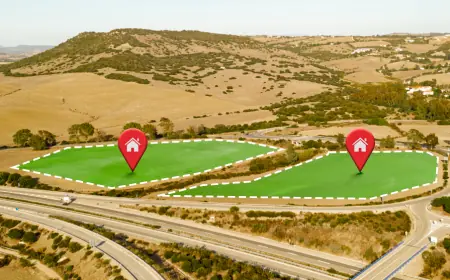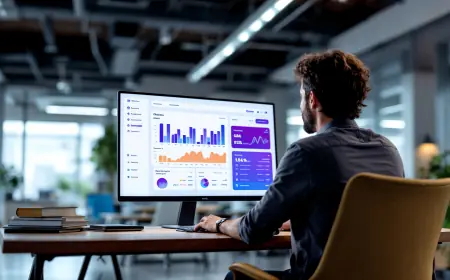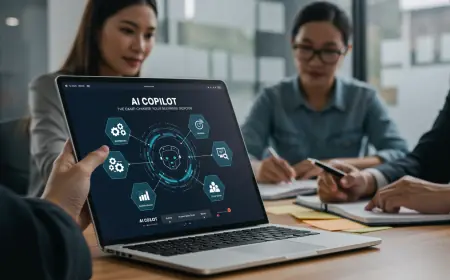Real-World Use Cases for Layer 2 Blockchain Development in 2025
Explore the top real-world use cases of Layer 2 blockchain development in 2025, from DeFi and gaming to healthcare, payments, and supply chain solutions.
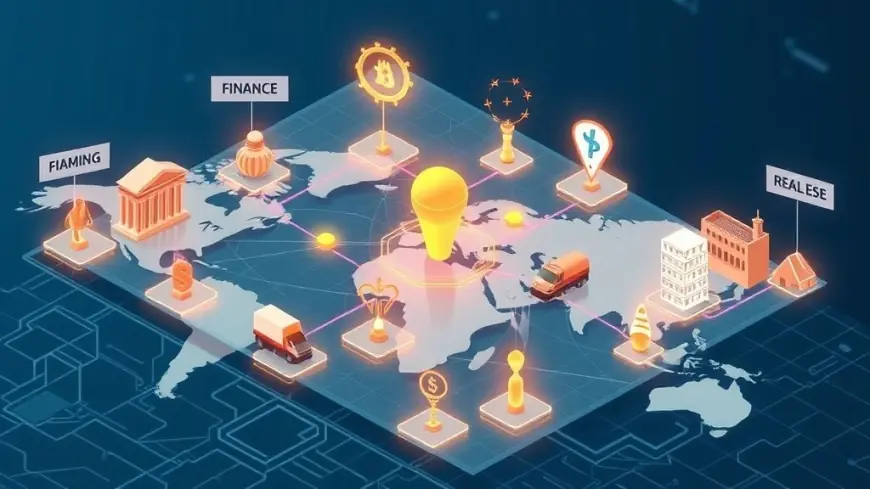
The blockchain world is rapidly evolving to accommodate the rising demands of scalability, efficiency, and affordability. With Layer 1 blockchains like Ethereum facing congestion and high gas fees, Layer 2 (L2) solutions have emerged as a vital technology to bridge performance gaps. These solutions offload transactions from the main chain while still ensuring security and decentralization.
By 2025, Layer 2 blockchain development has matured significantly, powering real-world applications across industries. From finance and gaming to healthcare and supply chains, the adoption of L2 is enabling faster, cheaper, and more scalable decentralized systems. In this blog, we explore the top real-world use cases for Layer 2 blockchain development in 2025—and why this technology is pivotal for the future of Web3.
1. Decentralized Finance (DeFi)
Faster and Cheaper Transactions
DeFi continues to be one of the most prominent applications of blockchain. However, high gas fees on Layer 1 networks have long limited user accessibility. Layer 2 solutions like Optimistic Rollups (e.g., Optimism, Arbitrum) and Zero-Knowledge Rollups (e.g., zkSync, StarkNet) drastically reduce transaction costs and enhance throughput.
In 2025, major DeFi platforms like Uniswap, Aave, and Curve have integrated with Layer 2s, allowing users to swap, lend, and borrow with minimal fees and near-instant confirmations. These improvements are especially beneficial for micro-transactions and high-frequency traders.
Cross-Chain Liquidity
Layer 2 is also streamlining cross-chain liquidity protocols by acting as a unifying layer between multiple Layer 1 chains. Aggregators on L2 can facilitate seamless token swaps across different blockchains, improving liquidity and user experience in DeFi ecosystems.
2. Gaming and NFTs
On-Chain Gaming at Scale
Blockchain gaming is booming in 2025, but on-chain mechanics were previously limited due to gas costs and transaction speeds. Layer 2 networks have revolutionized this sector by allowing in-game assets, currencies, and logic to operate efficiently off the main chain.
Games like Gods Unchained and Illuvium have migrated to L2 platforms like Immutable X and Arbitrum Nova, providing real-time gameplay without sacrificing decentralization. Players can own, trade, and upgrade in-game assets with minimal latency and no network congestion.
NFT Marketplaces
Minting and trading NFTs on Layer 2 drastically reduces costs for creators and collectors. Leading platforms like OpenSea, Rarible, and Magic Eden have integrated with Layer 2 solutions, offering batch minting, lazy minting, and gasless transactions.
NFT royalties, cross-chain interoperability, and fractional ownership have also become more feasible, enhancing creator monetization and community participation.
3. Enterprise and Supply Chain Management
Transparent and Scalable Tracking
Enterprises are increasingly using blockchain for tracking goods across global supply chains. Layer 1 limitations in throughput made real-time tracking expensive and slow. Layer 2 now enables enterprises to log supply chain events in a scalable and cost-efficient way.
Platforms like VeChain and Polygon Edge offer Layer 2 solutions that allow logistics companies to track origin, movement, storage, and delivery of goods with high fidelity. By 2025, manufacturers in food, pharmaceuticals, and electronics are leveraging Layer 2 to prove authenticity, reduce fraud, and ensure regulatory compliance.
Tokenized Assets and Invoices
Smart contract-based invoice management is another growing enterprise use case. Businesses can tokenize invoices and settle them on-chain using Layer 2 platforms. This accelerates accounts receivable cycles, reduces paperwork, and adds transparency to business processes.
4. Payments and Micropayments
Global Remittances
Traditional remittance systems are slow and expensive, especially for cross-border transactions. Layer 2 solutions such as Lightning Network (for Bitcoin) and zk-rollups (for Ethereum) enable real-time, low-cost remittances with minimal fees.
Platforms like Strike and BitPay have integrated L2 payment channels, allowing millions to send money across borders instantly, especially in developing countries. This is a game-changer for unbanked populations and gig economy workers.
Micropayments for Content
With L2, content platforms can finally support micropayments. Creators can be tipped in crypto for as little as $0.01 without worrying about high fees. Services like Audius (music), Mirror (blogging), and Deso (social media) are implementing L2-based micro-reward mechanisms that empower users and creators alike.
5. Identity and Credential Verification
Decentralized ID Systems
Layer 2 has enabled scalable decentralized identity (DID) solutions. By 2025, many institutions and governments are piloting L2-based IDs to authenticate users while preserving privacy.
Projects like Polygon ID and zkPass use zero-knowledge proofs to allow individuals to prove credentials—like age, citizenship, or qualifications—without revealing sensitive information. This is crucial for secure onboarding in sectors like banking, education, and healthcare.
KYC and AML Compliance
Financial institutions now use Layer 2 tools to handle Know Your Customer (KYC) data. Instead of sharing documents with every platform, users can grant permissioned access to verified credentials, reducing fraud while preserving privacy.
6. Healthcare and Medical Records
Secure and Scalable Health Data
Healthcare systems generate vast amounts of sensitive data. Storing this on a public blockchain is expensive and poses privacy challenges. Layer 2 solutions solve this by enabling private, permissioned, yet interoperable health record systems.
Projects like Solve.Care and Oasis Labs are exploring L2-based medical records that patients can share with doctors, insurers, and pharmacies securely. This boosts data portability and eliminates fragmentation in healthcare databases.
Tokenized Insurance Claims
Insurance providers are also using Layer 2 to process and verify claims in near real-time. Smart contracts on L2 networks automate validation, reduce administrative costs, and prevent fraudulent claims.
7. Real Estate and Asset Tokenization
Fractional Ownership
Real estate tokenization is no longer a concept—it’s operational in 2025. Platforms like RealT and Lofty use Layer 2 solutions to tokenize properties, allowing users to own and trade fractions of real-world assets.
Layer 2 ensures that trading of these tokenized shares is fast, affordable, and secure. Investors can receive rental income, transfer ownership, and exit positions without traditional legal overhead.
Real-Time Settlements
Property deals traditionally take weeks to finalize. With Layer 2-powered smart contracts, settlement can occur in minutes once conditions are met, reducing delays and increasing liquidity in real estate markets.
8. Public Services and Governance
Transparent Voting
Governments and DAOs (Decentralized Autonomous Organizations) alike are adopting Layer 2 for transparent, fraud-proof voting. L2 networks support secure identity verification and ensure tamper-proof vote recording at scale.
In 2025, cities in Estonia and jurisdictions in Latin America are experimenting with Layer 2-based e-voting for local governance, budget allocation, and citizen referendums.
Subsidy Distribution
L2 blockchains are also used to disburse subsidies, welfare benefits, and disaster relief. Smart contracts ensure that aid reaches only the eligible parties, and zero-knowledge proofs preserve privacy while preventing fraud.
9. Environmental and Carbon Credits
Green Asset Tracking
Carbon credit trading is increasingly powered by Layer 2. Projects like Toucan Protocol and KlimaDAO utilize L2 to tokenize carbon offsets and ensure verifiable environmental claims.
This boosts the transparency of ESG (Environmental, Social, Governance) initiatives and creates global markets for sustainability incentives.
Energy Microgrids
Layer 2 is enabling decentralized energy trading within microgrids. Homeowners can sell excess solar power to neighbors using L2 smart contracts, with instant settlement and transparent pricing.
10. Cross-Chain Bridges and Interoperability
Seamless Blockchain Interactions
Layer 2 acts as a bridge between multiple Layer 1 blockchains. In 2025, users expect to move assets and data seamlessly across ecosystems like Ethereum, Solana, Avalanche, and Polkadot.
L2 protocols like Connext, zkRouter, and Axelar are enabling this interoperability by standardizing cross-chain messaging, liquidity sharing, and data synchronization. This paves the way for a more connected and efficient decentralized world.
Conclusion
Layer 2 blockchain development is no longer a future promise—it is a current reality transforming industries in 2025. By solving the scalability trilemma, L2 solutions empower real-world use cases that were once thought impractical on Layer 1 chains.
From financial inclusion and supply chain transparency to gaming, healthcare, and green energy, the reach of Layer 2 spans across sectors. As adoption grows and innovation continues, we can expect Layer 2 to become the backbone of a scalable, decentralized Web3 ecosystem. If you’re a business, developer, or investor looking to tap into the blockchain revolution, now is the time to explore Layer 2 development. The potential is vast—and the future is being built right now.
What's Your Reaction?
 Like
0
Like
0
 Dislike
0
Dislike
0
 Love
0
Love
0
 Funny
0
Funny
0
 Angry
0
Angry
0
 Sad
0
Sad
0
 Wow
0
Wow
0

